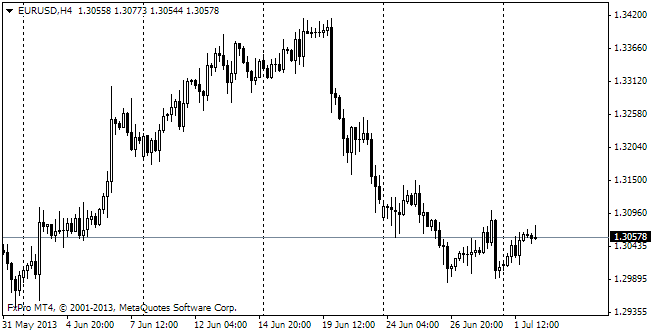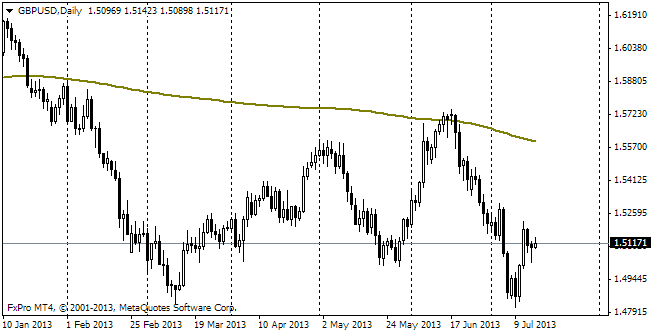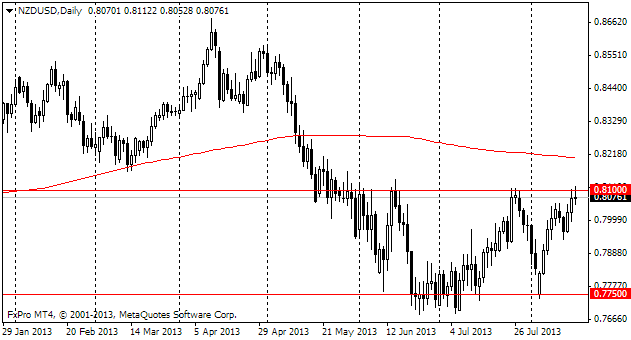EUR/USD
In the Fed default softness gave place to default tapering. Yesterday fomc announced reduction in purchasing of bonds and mortgage-backed securities by 10bln dollars starting with the next month (by 5bln in each group). This decision in general met the market expectations as the reaction was relatively moderate. The range of fluctuations in eurusd after the news release didn't exceed 30 pips. Partly it was due to the fact that earlier in the day there was stop-hunting with orders collected between 1.3650 and 1.3600. It was really surprising to see how EURUSD dropped from 1.3685 to the daily low of 1.3602 during the EU session. The main driver of the decline was a comment of the ECB's Noyer,who frankly said that any growth of the euro would be pernicious. Anyway, then the pair was returned to the levels, which prevailed on opening of the day. Judging by the market reaction and absence of a trend no matter what news is released, now it is hard to suppose which news will have enough potential to provoke continuous growth or depreciation of the single currency against the dollar. Well, this pair is probably one of the most stable ones in Forex now and the main struggle has shifted from the ‘dollar vs all the rest' plane to the plane of ‘the emerging vs the developed'. There is a feeling that it is a new long-term trend, which began to form already in the second half-year of 2013 and has developed this year. For all that, it is important to consider all comments of the EU officials regarding the euro. Now only they can affect the course of events if they venture to take additional steps to ease the policy. Regarding macroeconomic stats, the main attention should be paid to the release of Germany's employment data. Considerable deviations from the forecasts may help or harm the single currency. Also later there will be a publication of the US Prelim GDP rate for the fourth quarter. It will hardly be disappointing, otherwise the Fed wouldn't venture to carry out the second cut for the last six weeks.

GBP/USD
Notwithstanding the fact that the British pound has slightly weakened against the dollar recently, the pair stays rather high at 1.6550. We still believe that the pair will pull back from these levels in the coming few weeks. For it to do that there should be a reason like poor economic stats and excessive cautiousness of the BOE. The bank's head Carney tries his best to assure that he won't hurry with the rate increase on reaching the threshold unemployment rate of 7%. Considering today's releases, we should take note of Mortgage Approvals. This index has grown by over a third over a year and is now twice as high as in the hardest times after the crisis. It is a clear uptrend, coinciding with the overall recovery of the country's economy. So, the indicator is well enough in predicting economic trends, upon the whole.

USD/JPY
While the euro and the pound keep moving within the traded ranges, the yen is getting support on the capital outflow from the emerging markets. Last evening the currency dropped below 102.0 for a while, marking a return to the lows set at the beginning of the week. The pair has seldom lost correlation with the performance of stock exchanges. Now this correlation has been restored and again produces strong impact on the pair's performance.

NZD/USD
The RBNZ has kept the interest rate unchanged and even promised to raise it soon, but expressed its discontent with the high rate of the national currency. As surveyed, the chance of the rate increase at the January meeting was estimated at more than 50%. That's why preservation of the status quo put pressure on the Kiwi.
